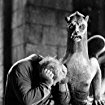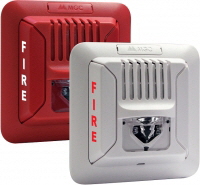Tech-News & Views
“Early in life I had noticed that no event |
|
|||||||||||||||||||||||||||||||
MERRY CHRISTMAS!Vancouver,B.C. - Here’s wishing all our readers, a very Merry Christmas, Happy Holidays, and an incredible 2019!!
HEADS UP! EST (CHUBB-EDWARDS) CONTROLS THAT UTILIZE BELLS!Vancouver, British Columbia - We’re still seeing a lot of EST Quickstart, EST-2, EST-3, and Fireshield controls that utilize NACs (Notification Appliance Circuits) connected to bells and certain models of horns without the proper protection. Please ensure that you look over the Technical Bulletin and identify those systems you service for some extra-special attention. The addition of the TVS Diode (Edwards Part Number 235196P) is critical to the long-term health of some early version power supplies. This issue came to light several years ago and we’ve noted that the Fireshield product appears to be one of the more popular replacement panels for older model fire alarm systems that employed Edwards 6616, 6500, and 2280 series controls. RTFM (Read the Freakin’ Manual)! Fireshield is definitely NOT DESIGNED to run bells!
2019 - A CHALLENGING YEAR AHEAD IN BUILDING LIFE SAFETY!Vancouver, British Columbia - Building life safety service providers are going to have to contend with a number of critical changes to the way inspection, testing, and maintenance has to be performed when the 2015 published editions of our National Fire and Building Codes are adopted in many jurisdictions across Canada in 2018. One of the Provinces in which this is going to occur is British Columbia (December 10, 2018 - SAVE THE DATE!). Most technicians of my acquaintance are going to be ill prepared, which means that many contractors, building owners and operators are going to find compliance with the Codes and Standards almost impossible to achieve. And they’re not the only ones that are going to be hard-pressed to find technically proficient individuals that will be able to successfully navigate and manage the new requirements 2019 is going to herald. The Engineering community, building officials and jurisdictional authorities face an even bigger challenge when new permits incorporate NBC 2015 and the confusing plethora of new life safety equipment, installation, testing and inspection Standards. National Building Code of Canada (NBCC) - 2015 So here’s a quick run-down of the Canadian Standards that are going to be referenced in NBCC 2015: CAN/ULC-S527:2011 (Amendment 1) - Standard for Control Units for Fire Alarm Systems (I should mention that a number of the above referenced Standards are included in a specially priced package that’s available through this website.) When you look at the publication dates of the above referenced Standards, the reader will quickly discern the challenges CENTRAL to an approval for occupancy of any new project designed to NBCC 2015, namely: How do you VERIFY a fire alarm installation where a number of key requirements have NO TESTING CRITERIA in the referenced testing and inspection Standard? How do you identify a suitable individual that will formulate the criteria for testing equipment and systems INTEGRATED AND CONTROLLED by the fire alarm system? Should the individual providing the CAN/ULC-S537:2013 Appendix “C” be involved? How do you identify qualified personnel to VERIFY a smoke alarm installation? When interconnected smoke alarms are being used to provide an audible warning of a sprinkler trip, how are you going to ensure the system operates during a power failure? NFPA 25 (2008 & 2011) requires the permanent installation of a Forward Flow Test Header in order to ensure subsequent ANNUAL TESTING of the back-flow prevention device can be performed. |
|
|||||||||||||||||||||||||||||||
|
How do you install, operate, and test smoke detectors in lieu of smoke alarms, and what signals should they provide to the Fire Signal Receiving Centre when they activate? Mass Notification... What is it? How do you install it? Verify it? Test it? National Fire Code of Canada (NFCC) - 2015 Here’s a list of the Canadian Standards that are going to be referenced in NFCC 2015: CAN/ULC-S540:2013 - Standard for Residential Fire and Life Safety Warning Systems: Installation, Testing, Inspection and Maintenance NFCC 2015 will raise a whole set of its own challenges, namely: How do you identify qualified personnel to perform the maintenance and inspection of interconnected smoke alarms? How do you identify an individual qualified to perform INTEGRATED TESTING of building life safety systems? What form should be used to document the testing of a smoke control system? What form should be used to document the proper testing of a sprinkler system? Kitchen suppression system? Outdoor fire alarm annunciator installation? Fire Signal Receiving Centre transmitter? These, and many more questions are going to need definitive answers and the trained, qualified professionals that will ensure these (and other) critical systems are properly tested, and will operate when required. Fire Technicians Network Certified Technologists are currently your only viable option!! Many jurisdictions have only now started searching for answers. You’ll find a whole bunch of them at www.firetechs.net! Please ensure you visit our TRAINING CENTRE! ON THE SUBJECT OF TRAINING!! ASTTBC’S NEW STANDARD OF PRACTICE (SoP) IS A MANDATORY READ!Surrey, British Columbia - If you’re a Registered Fire Protection Technician (RFPT) in ASTTBC’s Programme, you need to study their new Standard of Practice. You’ll be required to write an online exam to make sure you completely understand what your responsibilities and duties are. You’ll find beefed up reporting (of substandard work performed by others), required testing procedures and the use of the new tags being adopted. Pass and Fail criteria are going to become critical in determining whether the fire protection equipment you’re testing is actually in compliance with the provisions of the Fire Code and the relevant Standards. ASTTBC is going to allow companies serving the various communities that subscribe to professional technician certification until April 1, 2019 to use up their old tags. The most significant change in the new SoP is that it’s the FIRST TIME they’ve actually documented the requirements for testing fire protection equipment by NAMING the relevant Standards that apply. Technicians performing ANNUAL testing of fire alarm systems are going to have to be able to DOCUMENT the proper testing of insuite residential smoke alarms (and believe me you’re going to be in a world of hurt if you don’t know what this entails). Visit our Online Training Centre for more information on how you can brush up on all the latest changes, and get your boss to explore our special pricing on Standards Packages! Keep a copy of the SoP handy in your van. You’ll need it when you next call your service manager and tell him/her that you’re going to need extra time to test that building they just sent you to. DON’T BE CAUGHT SHORT!
VANCOUVER IMPLEMENTS AMENDED FIRE ALARM VERIFICATION REQUIREMENTS!Vancouver, British Columbia - Vancouver’ amended Bulletin 2000-02- BU/EL references a list of Qualified Verifiers. The list is NOT going to be published publicly, but can only be referenced by Building Department Staff. It is incumbent on the Designer, Building Owners and the installing contractors to confirm with the Building Department that the individual performing this crucial test of a fire alarm system is approved to do so! The key phrase in the Bulletin is: “The List of Acceptable Organizations / Qualified Persons is primarily for staff use, this list will be updated approximately twice a year, and it will not be posted on the City’s website. The City’s Building Inspections and Electrical Inspections Branches accept fire alarm verification reports only from the List of Acceptable Organizations / Qualified Persons for purpose of the CAN/ULC-S537.” It is imperative that companies engaged in providing this service also ensure the technicians they employ are on this list! Many Canadian Jurisdictions have adopted some means of identifying qualified individuals to perform testing, Verification, maintenance, and service of building life safety equipment and systems. Please ensure your company-of-choice employs individuals that satisfy this criteria!
WE REVIEW MIRCOM’S NEW FHS-400 SERIES OF HORN-STROBES AND STROBES!
We’ve been privileged to have been provided with several samples which we’ve incorporated on the two practical training boards we’ve set up so far. They’re extremely low current draw (at 15 Cd) coupled with the 90 dBA horn makes this an attractive and maintenance-free alternative to bells for a number of older buildings that may have audibility issues. It makes for a perfect replacement for the older style xenon tube strobes where the circuit’s power budget may be close to “maxxed-out”. You can download the specification sheets and installation instructions from Mircom’s website at https://mircom.com/product-listing/fire-alarm-detection/notification-appliances/400-series/ . Contact your local Mircom Branch office for more information (and pricing).
QUICK LINKS!AHJ Training Courses are being offered by two (2) Canadian national associations:
Canadian Fire Alarm Technician Certification:
Fire Protection Equipment Technicians (Extinguisher Service):
Fire Protection Equipment Technicians (British Columbia):
INTERESTED IN COMMENTING ON THIS ARTICLE? QUESTIONS? GOT A STORY? SOMETHING OF INTEREST AND/OR NOTE-WORTHY? |
||||||||||||||||||||||||||||||||
|
|
|
|||||||||||||||||||||||||||||||
The Fire Technicians Network
+1 (888) 340-3473
“We are not a professional union, but together, we are a union of professionals!”
What we’re all about!
We are not affiliated with ASTTBC, CFAA, CANASA, NFPA, NAFED, or NICET (although we encourage you to explore and objectively evaluate the benefits associated with supporting their individual efforts). Membership in the Fire Technicians Network is entirely voluntary. Are you up to the challenge of demonstrating your commitment to public safety and the highest standard of professional practice?
Copyright © 2007 - 2020 The Fire Technicians Network. All Rights Reserved

 Vancouver, British Columbia - Mircom recently introduced a new Standard for conventional notification appliances in North America. It’s called the 400 series. It features a brilliant white LED strobe that can be programmed to a range of intensities from 15 to 185 Candella. The process is simple and quick. It requires positioning a plastic tab into a corresponding slot located at the back of the unit. A viewing window at the bottom of the unit lets you see what it’s been set at.
Vancouver, British Columbia - Mircom recently introduced a new Standard for conventional notification appliances in North America. It’s called the 400 series. It features a brilliant white LED strobe that can be programmed to a range of intensities from 15 to 185 Candella. The process is simple and quick. It requires positioning a plastic tab into a corresponding slot located at the back of the unit. A viewing window at the bottom of the unit lets you see what it’s been set at.